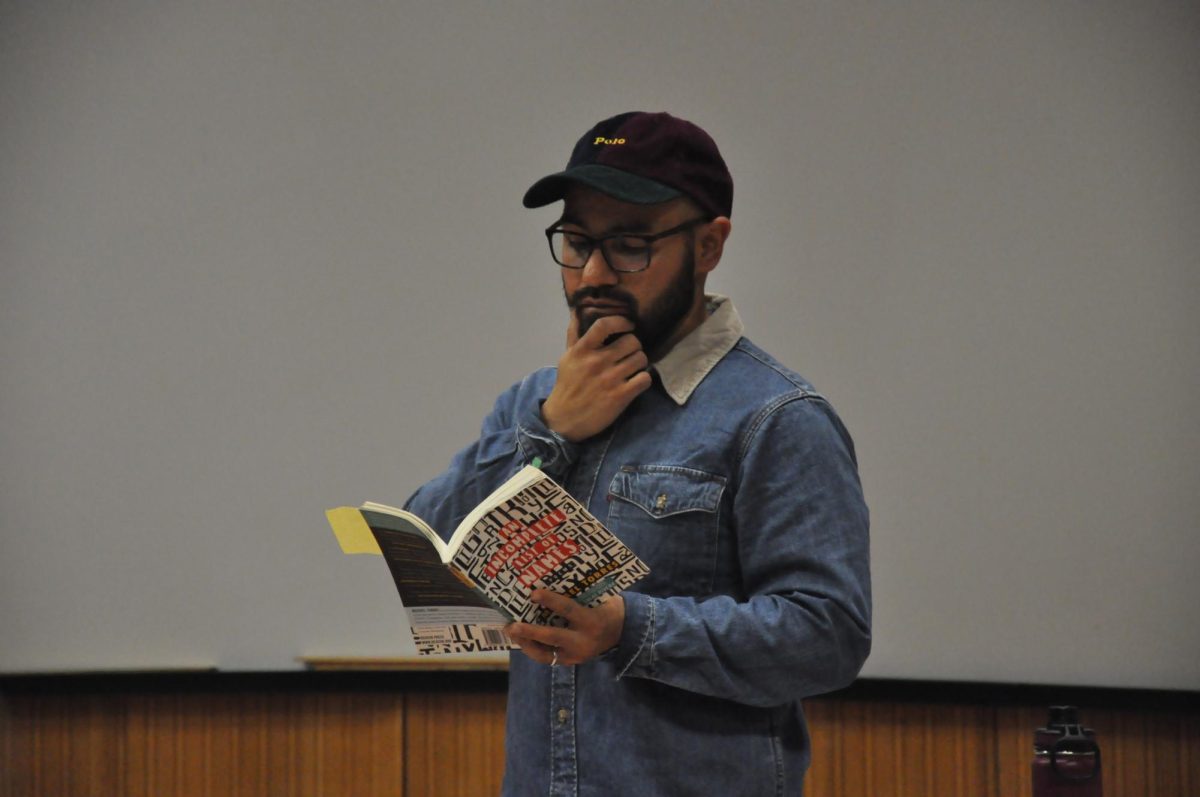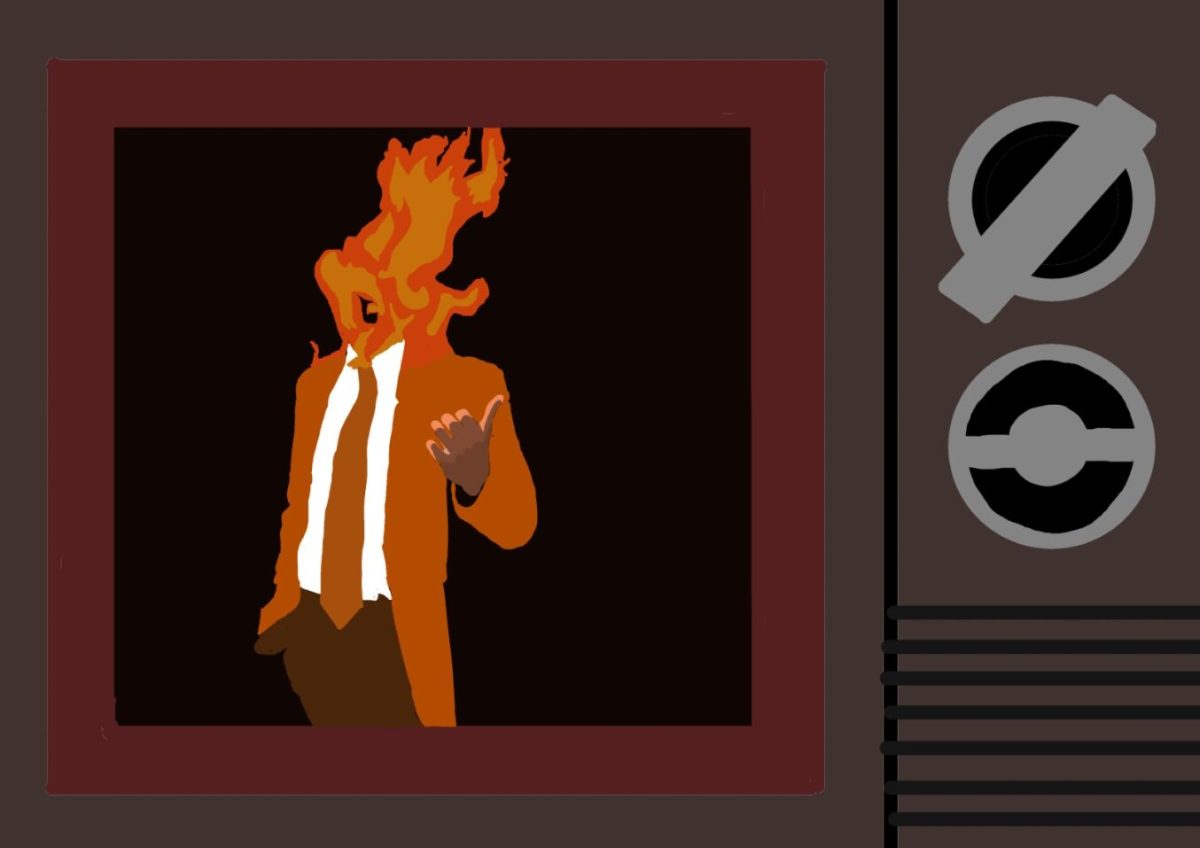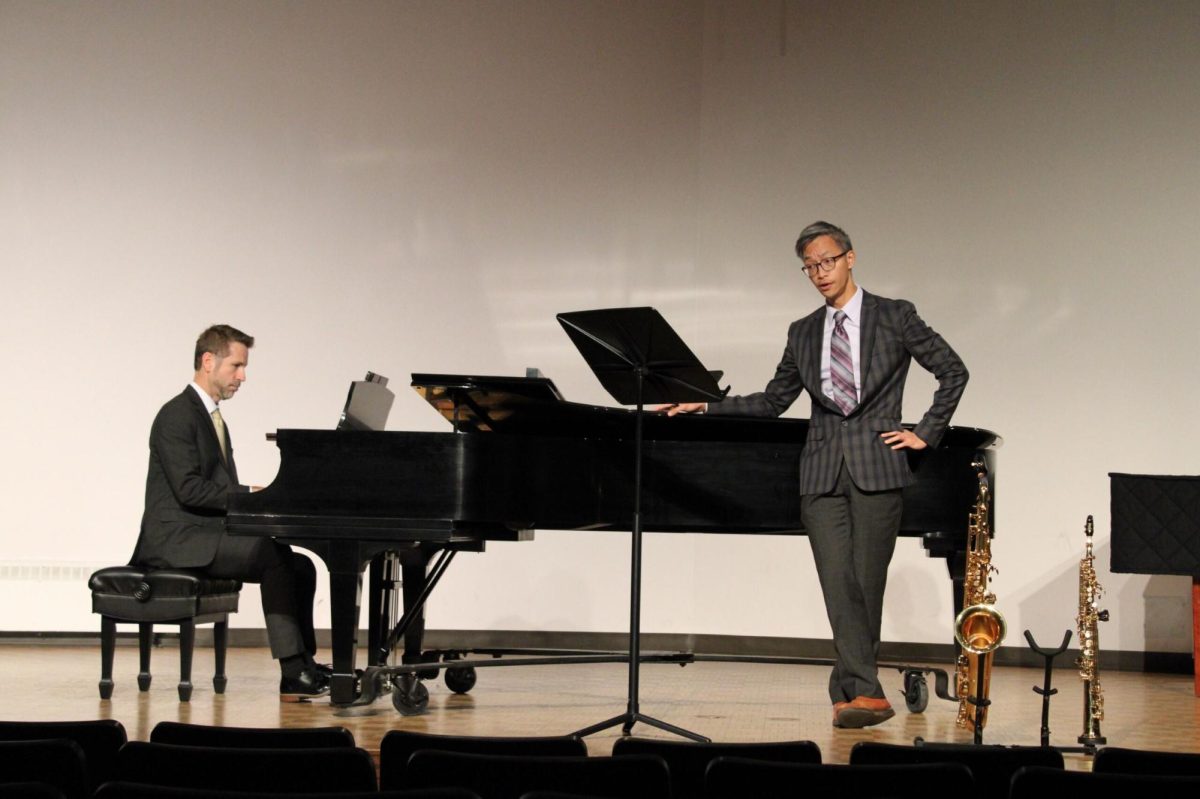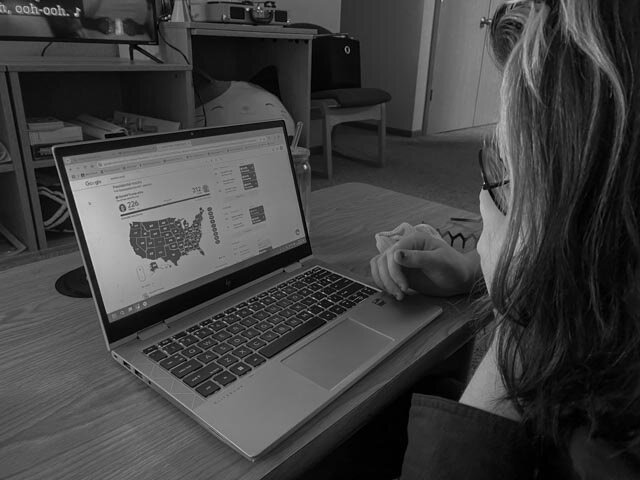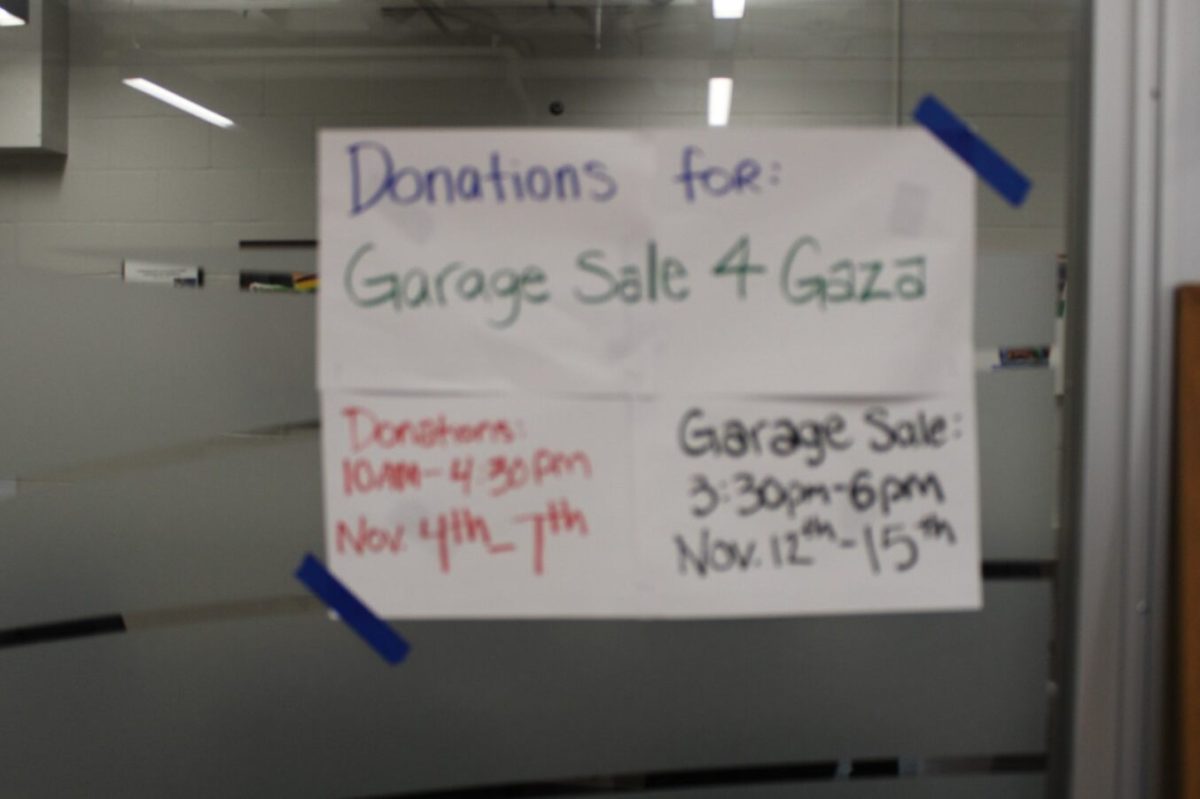Hannah Jones/Winonan
The experience of going up in an airplane and looking down on the world from which you just departed—the shrinking airport, the beetle-sized cars and buses, the fluorescent blue confetti of outdoor pools—is a captivating one.
There is something interesting and haunting about examining the world from a lofty height and seeing everything that once towered over you turn small and quiet behind the windowpane. Almost like a colossal child gazing down at a play set, we get the urge to examine, to explore, to get closer.
Distance, in a strange, surreal reversal, draws us in. That’s the feeling that seizes most attendees of “Recent Sculpture,” an exhibit by Karl Unnasch held in the Watkins Gallery.
A former Winona State University graduate, Unnasch brought his art back to his undergraduate school to share with students and faculty his unique series of sculptures, each one a miniature world.
Every one of Unnasch’s works is a tiny environment composed of model pieces, bric-a-brac, and even a few interesting objects salvaged from nature and urban environments.
The piece located nearest to the door, “Corpus Corvus Corollary,” is an enclosed system of various different terraces placed like stair-steps one after another, a little slice of a miniscule universe. Each platform on the sculpture contains an even smaller world: a backyard scene with a tree house, a small garden with tufted stalks growing behind a fence a centimeter tall and even a roadside ravine complete with a discarded pizza box no bigger than the nail on my pinky.
The viewer finds his or herself descending and zooming in on smaller and smaller units within the piece, each detail evoking a whole-bodied sense of story and place. The piece is designed to draw the viewers in, tempting them to come closer and closer, losing themselves thinking about the nature and secrets of each miniature universe.
A comment in the guestbook thanked Unnasch for creating such “discreet little worlds,” full of a quiet secrecy in their intricate detail.
Much of Unnasch’s work on display deals with man’s relationship with the natural world. He characterizes his work as a commentary on “urbanization vs. nature,” and uses a fair few rescued objects from life to bring into his sculptures: traffic cones, aural gages and mason jars of all shapes and sizes.
However, Unnasch’s media also include a few more unconventional materials, including decaying organic matter in the remains of plants and animals. Viewers may be surprised when, after being sucked in to a particular piece’s intriguing scenery, that the entire scene is stacked on a very real snake corpse, dry, flattened and coiled like a stiff sailor’s knot.
Unnasch is interested in the effect of taking these objects “out of context” and forcing the viewer to make different conclusions about them.
The dead bodies of snakes and snapping turtles may be repulsive or unnerving when found out in the real world, but within the enchanting, Lilliputian sculptures of “Recent Sculpture,” they take on new life and new meaning. The body of the snake is not disgusting, but rather a part of the landscape, undulating coils and dusty scales forming the foundation for a new universe seemingly unaware that it is perched on the back of a dead reptile. This also hints at a commentary on our own urbanized society, which is built so precariously and carelessly on the spine of the natural world, often with degrading or destructive results.
Each piece in “Recent Sculpture” is not just a work of art, but a story as well, tempting each viewer to investigate and question the structure of the fantasy worlds that Unnasch presents. The exhibit will continue to be on display all day until Nov. 7.
Contact Hannah at [email protected]








































